
Ron Swaisgood, Ph.D., is the recovery ecology director for SDZWA; Melissa Merrick, Ph.D., is a recovery ecology associate director for SDZWA; Tali Hammond, Ph.D., is a recovery ecology scientist for SDZWA.
Consider this: You are only about an inch high and very slow moving. You do have a hard outer shell, which is helpful at keeping some predators from eating you. Still, many predators think of you as a crunchy-on-the-outside, juicy-on-the-inside treat. What’s more, you live in a harsh desert environment, and are fortunate if you get a few drinks of water each year. You may have guessed by now that you are a desert tortoise. Getting “inside a tortoise’s shell” to understand its perspective on the world is a large part of what we do to try to better conserve this species.
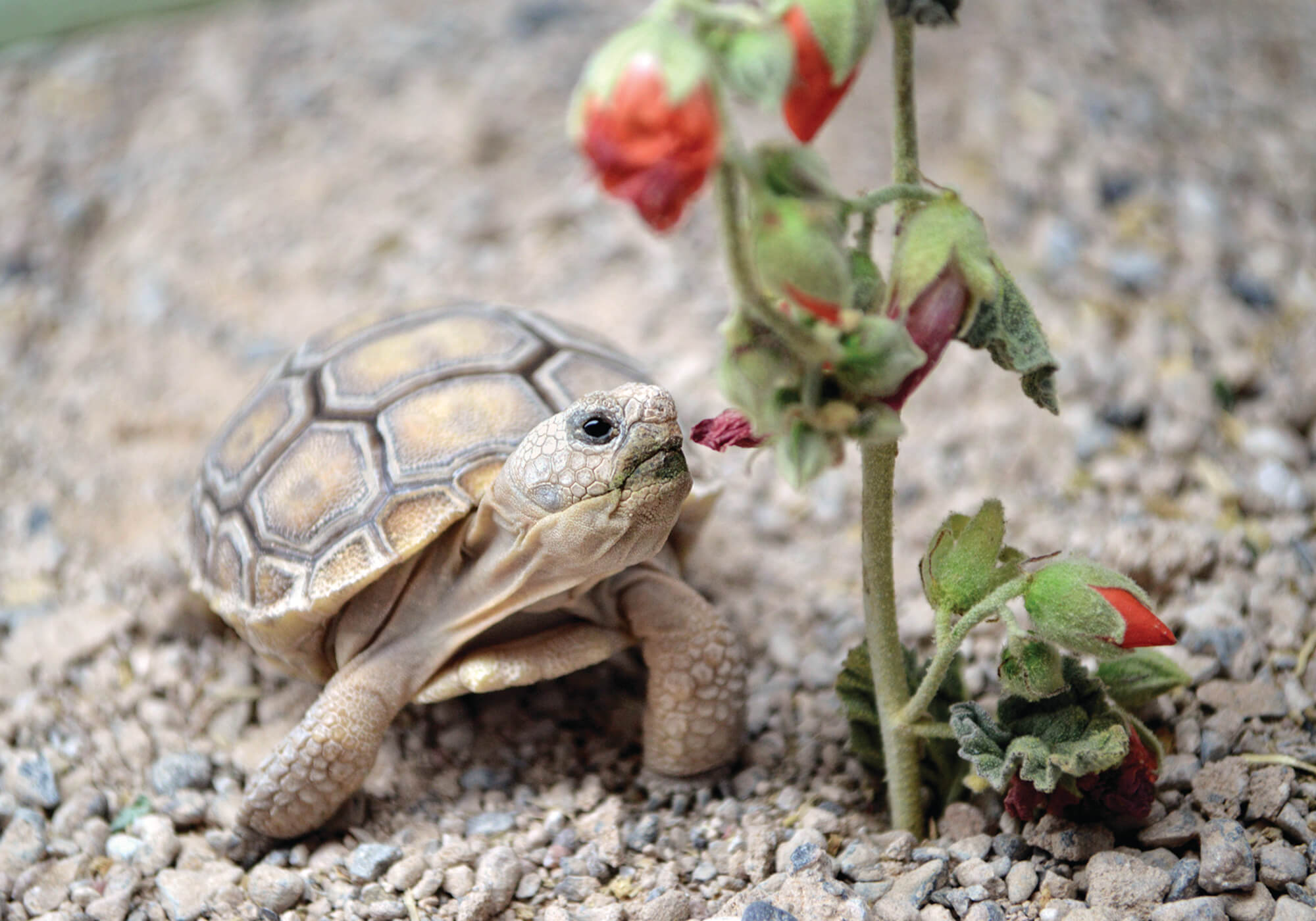
Trouble in the West
The Mojave desert tortoise Gopherus agassizii is one of the most beloved denizens of the western deserts of the US. Yet, despite the vastness of the American desert, the situation for the tortoise is becoming increasingly desperate: each passing year there are fewer and fewer of them to be found. It seems to be a case of “death by a thousand paper cuts,” with numerous human actions eroding away at tortoise habitat: roads, solar developments, and an increase of “subsidized” predators. Subsidized predators are predator species that thrive in urbanized or human-associated habitats thanks to their ability to take advantage of resources that are associated with humans. In the deserts of the southwestern US, ravens are considered “subsidized predators” and are much more numerous today than they were historically, which is a big problem for desert tortoises.
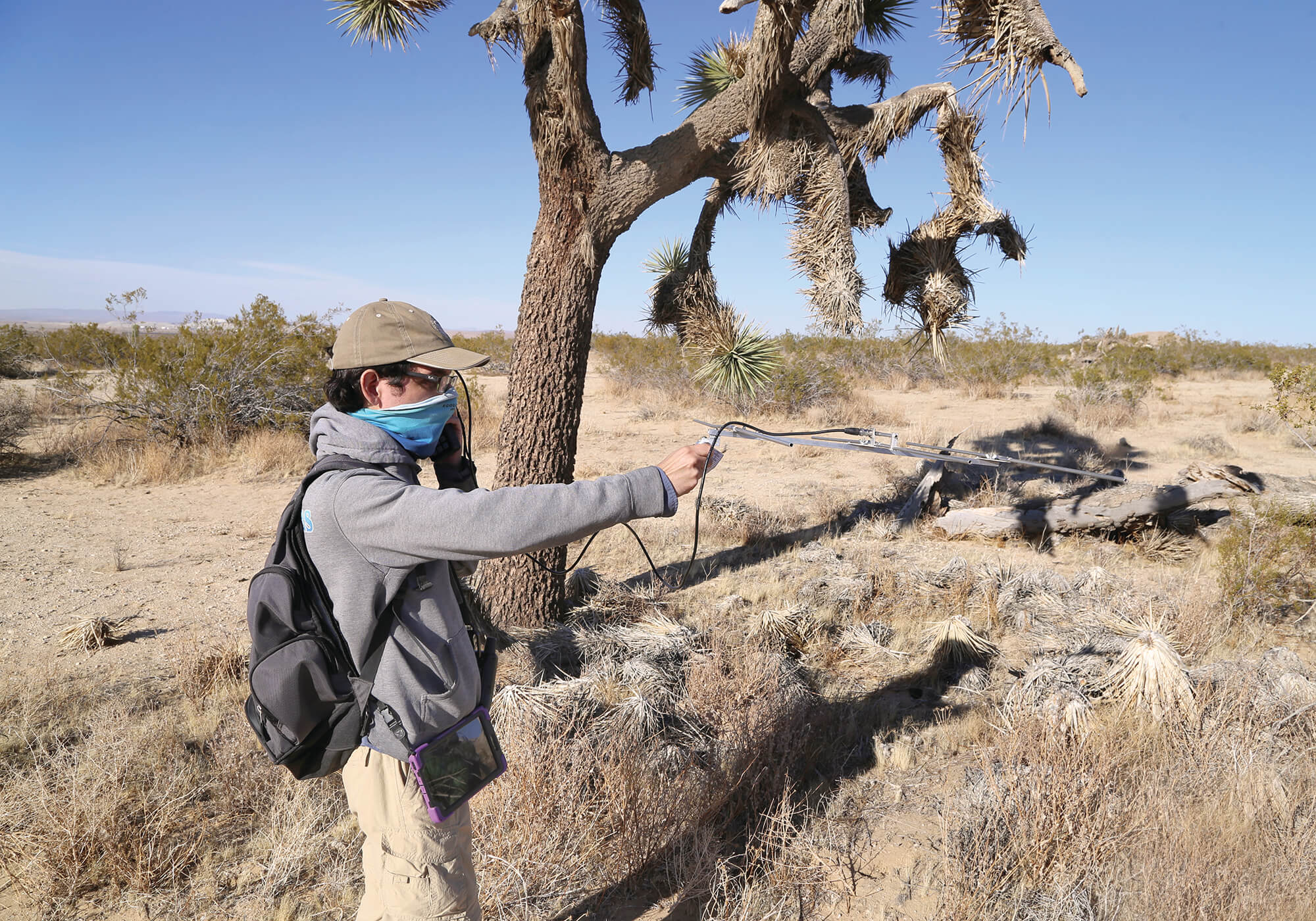
Off to a Good Headstart
Several years ago, San Diego Zoo Wildlife Alliance began a program to understand tortoise habitat needs and develop best practices for rearing and releasing tortoises back to the wild, in areas where their future can be safeguarded. We conduct this work with a number of important partners, including the U.S. Geological Survey (USGS), the U.S. Fish & Wildlife Service, Edwards Air Force Base, and others.
In our desert tortoise conservation program, we use headstarting and translocation as tools for species recovery. The process starts out with a search for tortoise moms-to-be. We search the desert for adult female tortoises, give them small transmitters for tracking purposes, and using a mobile X-ray unit, periodically check to see if they are gravid (that is, have eggs). When they are gravid, we bring them into headstarting facilities to lay eggs for headstarting. We then return females to where they were found but keep the eggs (and eventually hatchlings) safe in our protected facility, where predators cannot reach them, and food is plentiful. They thrive here, but after one to two years, these young tortoises reach sufficient size to be less vulnerable, and the time comes for them to return to the wilderness, where they can help reestablish their species.
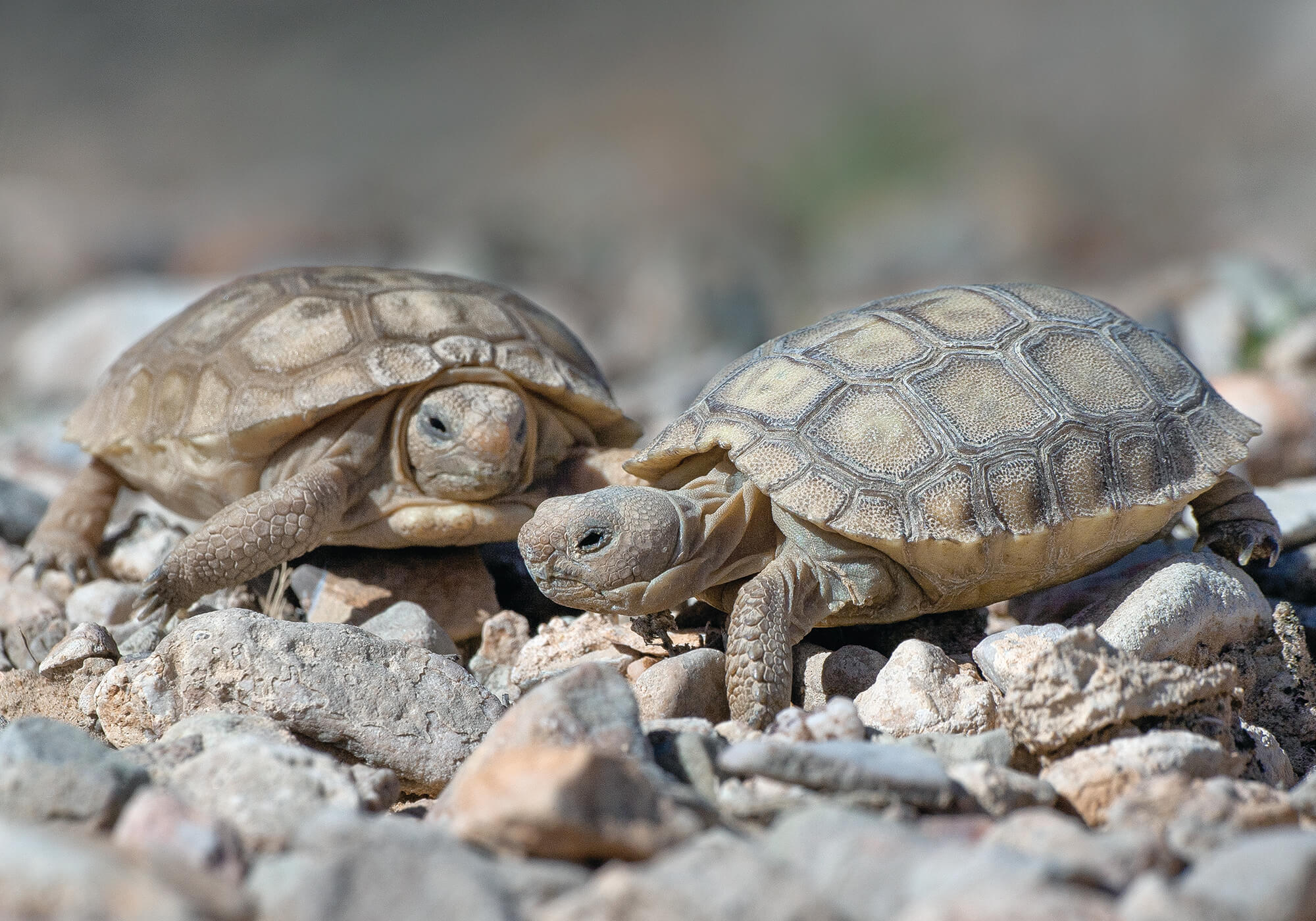
A Tortoise-eye View
It’s a heartwarming experience to watch these tiny tortoises experience their natural desert landscape for the first time, with its whimsical Joshua trees peppering bright blue desert skies, and miles and miles of sand. But the real work comes in monitoring these animals and understanding how they use their new, wild habitat. Our work focuses on ecological factors that help make young tortoises less vulnerable to predators, such as refuge and camouflage. A two-year-old tortoise is still no match for a raven, and its main defense is to remain undetected.
This is where understanding the tortoise’s perspectives comes in: we hypothesized that camouflage, in the form of rocky ground (tortoises look rather like rocks), or burrows (constructed by small mammals) that serve as refuges from predators (and inclement weather) could be vitally important to avoid ending up as a meal for a raven or some other hungry predator. We also know that all desert environments are not equal, and some contain different compositions of plant species that might afford food or shelter.
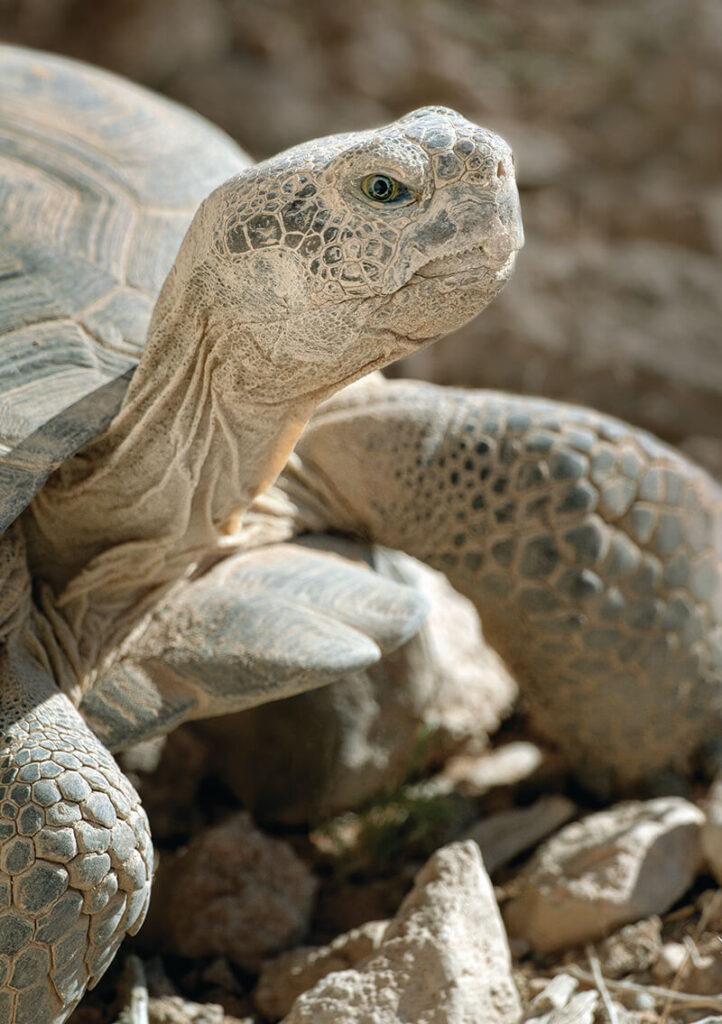
Armed with these ideas, we set out to test how careful selection of release site might affect tortoise health, growth, movement, and survival. Does camouflage, refuge availability, or plant community make a difference? In our first round of tests, conducted in Nevada and led by Melia Nafus, Ph.D., (working for SDZWA at the time, but now with USGS), the answer was an unqualified “Yes.” Careful site selection based on these factors boosted one-year survival from 20 percent to almost 80 percent! However, the Nevada and California deserts can be quite different, and the next step was to determine whether these same benefits still hold true in California. In scientific parlance, we wanted to know whether our findings were generalizable.
Today, we are in the midst of this second round of efforts. We raised nearly 150 healthy young tortoises and released them into several sites within Edwards Air Force Base and Ward Valley, managed by the Bureau of Land Management. We do not yet have answers from this more recent study, but we are actively tracking these tortoises to monitor how they are doing. We also conduct periodic health assessments and measure growth rates to determine which tortoises are thriving, data that in turn inform us about habitat quality. We predict that tortoises will grow faster in higher quality habitat.
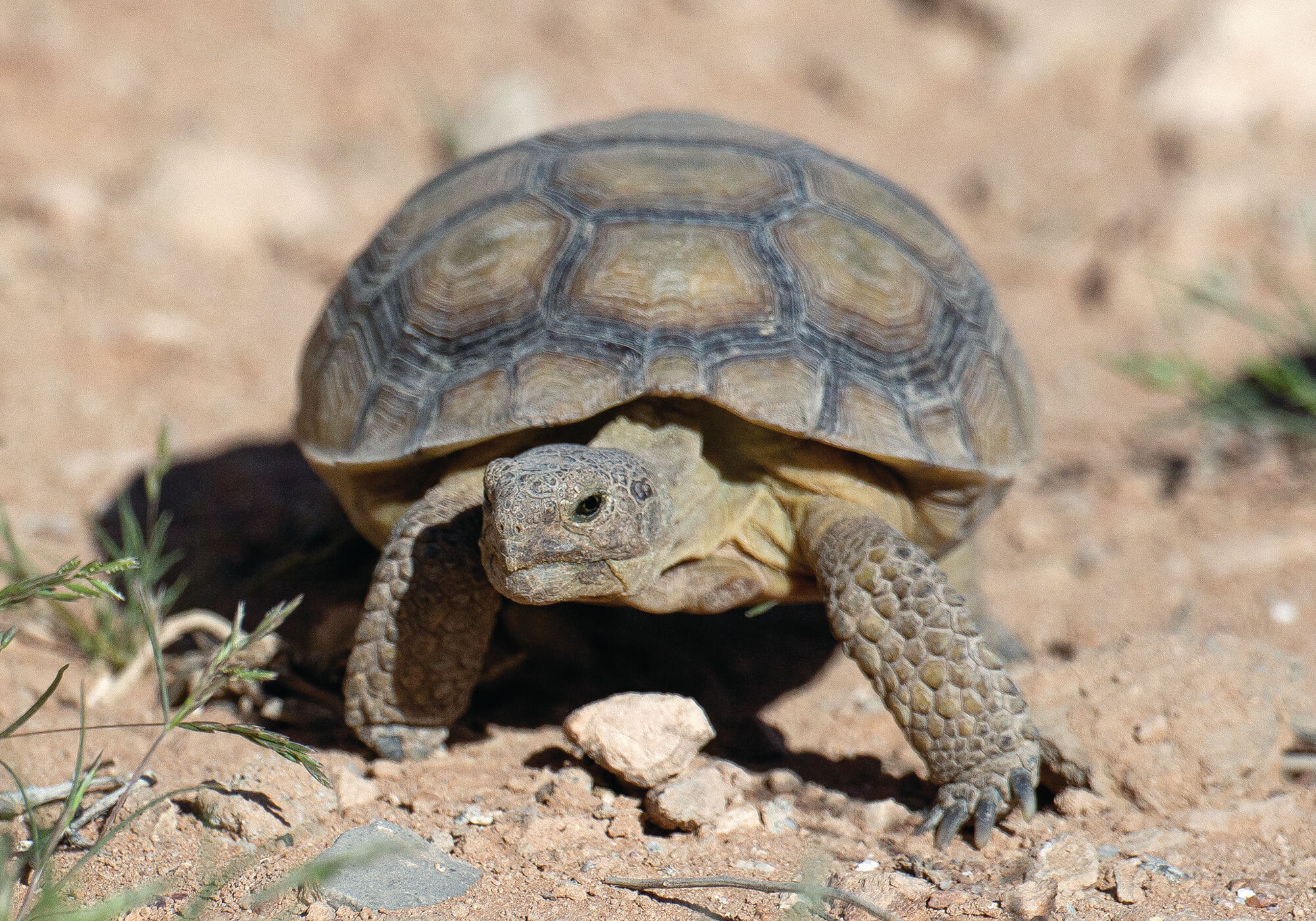
Looking Ahead—and Up
It is our hope that, in addition to replenishing declining populations of this desert icon, our research will help us learn more about tortoise habitat needs. The knowledge gap about young tortoises is especially large, in part due to difficulties in finding them. They spend about 98 percent of their lives below ground, sheltered in a burrow, coming up following rains to eat and drink. Mystery has never informed conservation action, so our aim is to make the lives of young tortoises less mysterious. While we know what constitutes “suitable habitat,” we don’t know what makes “great” habitat, which allows tortoises to thrive, not just survive. This knowledge will help conservation managers make better decisions about where to release tortoises that need to be translocated, which habitat areas to prioritize for protection, and which features of the environment are important to restore to improve existing tortoise habitat. Armed with this knowledge, we plan to promote the recovery of this beloved species of the Mojave Desert of California.
This project was made possible by generous support from the U.S. Bureau of Land Management, the U.S. Fish & Wildlife Service, the California Energy Commission, the National Fish & Wildlife Foundation, Edwards Air Force Base, the Favrot Fund, and the Zuest Family Foundation.




